Pavilion Publishing and Media Ltd
Blue Sky Offices Shoreham, 25 Cecil Pashley Way, Shoreham-by-Sea, West Sussex, BN43 5FF, UNITED KINGDOM
The National Medicine for Old Age Psychiatrists conference 2012
The eighth National Medicine for Old Age Psychiatrists conference took place on the 5–6th November 2012 at the Institute of Physics. This report is based on some of the key presentations from the conference.
The National Medicine for Old Age Psychiatrists conference is an annual event that is now in its eighth year. Its aim is to provide old age psychiatrists with a comprehensive review of the common medical conditions that affect older patients. Topics reviewed at the conference included stroke, dementia, malnutrition, Parkinson’s disease and falls.
Stroke
Report based on a talk by Dr Barry Moynihan, Consultant in Stroke Medicine, St George’s Healthcare Trust, London
The World Health Organization definition of stroke is “rapidly developing clinical signs of focal (or global) disturbance of cerebral function, with symptoms lasting 24 hours or longer or leading to death, with no apparent cause other than vascular.”1
As a stroke is of sudden onset and focal, the FAST checklist is useful in clinical practice:
- Facial weakness—can the person smile? Has their mouth or eye drooped?
- Arm weakness—can the person raise both arms?
- Speech problems—can the person speak clearly and understand what you say?
- Time to call 999: if you see any of these signs.
With two million brain cells lost per minute, primary prevention of stroke essential. Factors include smoking cessation and management of hypertension, hyperlipidaemia, diabetes, atrial fibrillation, heart failure and prevention of a sedentary lifestyle.
The major cause of stroke is an infarction (75%) whereas haemorrhage accounts for 25%. Distinguishing between an infarction and haemorrhage needs a CT scan. Large vessel strokes affect the cortex and the things the cortex does—attention, language and motor control and planning. Whereas vertebrobasilar strokes cause weakness or sensory loss (sometimes this can affect both sides), unsteadiness/falls, as well as cranial nerve problems such as abnormal eye movements and swallowing problems.
Every patient benefits from a stroke unit because they have been proven to reduce mortality, dependency and the need for institutional care. If stroke units have been the enforcer of change, then IV thrombolysis has been the driver for change and remains the only licensed treatment for stroke.
To conclude, stroke is now an emergency—think FAST!
Falls and syncope
Report based on a talk by Dr Mark Cottee, Consultant in Geriatric Medicine, St George’s Hospital and Medical School
A third of the population over 65 years are at risk of falls and repeat falling increases with age.2
Across England and Wales, approximately 152,000 falls are reported in acute hospitals every year with over 26,000 reported from mental health units and 28,000 from community hospitals. The estimated cost of £15 million per annum is for immediate healthcare treatment alone.
There are over 200 published risk factors for falling and in 85% of patients falls are multifactorial. Risk factors include drugs and alcohol, ageing, medical and environmental. Reducing falls in hospital requires a comprehensive approach.
A well-documented source of falls is syncope, which is associated with poor outcomes. However, recent technological advances have improved both diagnosis and treatment.
An initial evaluation of syncope requires three key questions: is this syncope or non-syncopal attack? Is structural heart disease present? What is the history of the syncope? The history can include recollection of a fall such as aura, palpitations, changes in posture, activity and head movements. Other important questions are how quickly did the patient recover? Was there confusion, shaking/incontinence/ tongue biting? How was the patient’s health in the previous few days?
Examination would include blood pressure (lying and standing), pulse rate, rhythm and character, cardiac murmurs and neurological tests including gait.
The biggest cause of loss of consciousness is neurally-mediated (50%). This is a disorder of the autonomic regulation of postural tone, which results in hypotension, bradycardia, and loss of consciousness.3
Other causes of loss of consciousness are orthostatic hypotension, cardiac arrhythmia, cardiac structural (such as acute myocardial infarction and aortic stenosis) and non- syncopal (such as epilepsy and TIA). An unknown cause of syncope is reported in 20% of patients.
Cardiology update for psychiatrists
Report based on a talk by Ceri Davies Consultant Cardiologist and General Physician, Barts Health NHS Trust
It is well known that patients with psychiatric problems have worse cardiac outcomes for ischaemic heart disease (IHD), which is a major cause of death in the UK.
There has been a lot of research about IHD in the psychiatric population. Studies have found that there is an increase in cardiac mortality in schizophrenic patients.4,5 Another found that major depression is associated with a 2.7 fold increase in IHD mortality.6
Heart failure is the commonest cause of IHD and its prevalence increases with age. It is associated with morbidity and high mortality. Treatment includes ACE inhibitors, beta-blockers, diuretics and device therapy such as implantable cardioverter defibrillators and biventricular permanent pacemakers.
Modifiable risk factors for IHD are smoking, hypertension, hypercholesterolaemia and diabetes. Non modifiable are family history, sex and age.
Hypertension is persistently raised blood pressure of over 140/90mmHg. Drug therapy is started if blood pressure is >160/100mmHg with no risk factors or if blood pressure is >140/90mmHg with other risk factors for IHD. If the patient is over 55 years (or black), treatment is with a calcium channel blocker or thiazide diuretic. If the patient is under 55 years, treatment is with an ACE inhibitor (or an ARB if ACE inhibitors are not tolerated). Patients need ongoing monitoring to ensure adequate blood pressure control is maintained.
Other common cardiac problems include hypercholesterolaemia, atrial fibrillation and heart failure. Atrial fibrillation is a common arrhythmia with a risk of tachycardia and thromboembolism.
For persistent/permanent atrial fibrillation, treatments include beta-blockers, verapamil or digoxin along with anticoagulation and ablation. For paroxysmal atrial fibrillation, amiodarone, sotalol, flecainide, anti-coagulation and ablation are recommended.
New treatment options for atrial fibrillation include dabigatran, which is an orally administered anticoagulant that inhibits the formation of the thrombin enzyme. It has a UK marketing authorisation for the prevention of stroke and systemic embolism in adult patients with nonvalvular atrial fibrillation who have had a previous stroke, TIA or systemic embolism, and/or left ventricular ejection fraction below 40%, and/or symptomatic heart failure of NYHA Class 2 or above and/or are aged 75 years and over. Dabigatran also has a UK marketing authorisation for people with atrial fibrillation aged 65 years or over who have diabetes, coronary heart disease or hypertension.
Parkinson’s disease
Report based on a talk by Dr Doug MacMahon, Consultant Physician, Coventry
There is a four-stage paradigm of Parkinson’s disease care, which includes diagnosis, maintenance, complex and palliative. Non-motor symptoms dominate the clinical picture of advanced Parkinson’s disease and correlate with advancing age and disease severity.
The PDS survey7 found that non-motor symptoms have a major impact on quality of life such as balance, sleep, memory failure, confusion and drooling. These type of symptoms have more impact on quality of life than motor symptoms, and they are likely to lead to nursing home placement and are therefore costly. Non-motor symptoms though are often under-recognised and inadequately treated.
The non-motor symptom complex of Parkinson’s disease includes neuropsychiatric symptoms (such as depression, apathy, and hallucinations), sleep disorders (such as restless legs, periodic limb movements and REM behaviour disorder), autonomic symptoms (such as bladder disturbances and sweating) and gastrointestinal (such as constipation). Many non-motor symptoms are treatable.
A large study looked at the prevalence of non-motor symptoms. Of the 149 people recruited 15 to 18 years ago in the Sydney Multicenter Study of Parkinson’s disease, one third survived. The original study compared low-dose levodopa with low-dose bromocriptine. Problems experienced by people who survived 15 years from diagnosis included falls, which occurred in 81% of patients, and 23% sustained fractures. Cognitive decline was present in 84%, and 48% fulfilled the criteria for dementia. Hallucinations and depression were experienced by 50%. A quarter of patients had been admitted to nursing homes by 10 years.8
Predictors of nursing home placement are increasing age, dementia and hallucinations. The frequency of depression is also high in Parkinson’s disease patients at 40%, which is twice the rate of severe depression seen in other equivalently disabled patients. Psychosis is also a big problem as is dopamine dysregulation syndrome, REM behavioural sleep disorder and impulse control disorders.
It is important to work with the multidisciplinary team to manage Parkinson’s disease and community psychiatric nurses are key in this. Palliative principles are important and need consideration throughout for early identification and assessment, prevention and treatment of pain and other physical, psychosocial and spiritual problems, and also relief of suffering.
Nutrition and psychiatry
Report based on a talk by Professor Margot Gosney, Director Clinical Health Sciences, Reading
Poor nutrition is common and affects physical and psychological functioning. Elderly people are particularly at risk yet sometimes easy changes can make large clinical differences.
Malnutrition is a common problem in the hospital setting and it affects 5–10% of older people. Up to 55% of older patients are undernourished on admission to hospital and many patients’ nutrition deteriorates further in hospital. Research does provide evidence for practice change.
The cost of preventable malnutrition to the NHS in the UK is £8 billion per year. What is unknown is the cost of loss of rehabilitation potential and cost in bed days for poor healing and impaired immunity etc.
Artificial nutrition support includes snacks (high calorie), sip feeds (vanilla), enteral feeding and parenteral feeding. Food in the hospital setting needs to be attractive, the right texture (rheology), the right temperature (drinks), served frequently in small volumes (24 hours per day) and within reach and sight.9 What also needs to be considered is the role of the senses (taste, smell) and the effects of ageing on these senses.
There are reasons why older people are unable to meet their nutritional needs and these include social (poverty, isolation), medical (malabsorption, dysphagia), psychiatric (depression, late life paranoia) and psychological factors (cognitive loss, alcohol or drug abuse).9
Micronutrient deficiency can have an impact on mood and cognition in older age groups. An association exists between depression and low plasma selenium. Low folate is noted in depressed people and administration of folate plus fluoxetine improves mood. In addition, improved mood has been seen when low vitamin C levels are increased.
References
- WHO MONICA Project Investigators. J Clin Epidemiol 1998; 41: 105–114
- Lord SR, et al. Aust J Public Health 1993; 17(3): 240–45
- Brignole M, et al. Europace 2004; 6(6): 467–537
- Brown S, et al. Br J Psychiatry 2000; 177: 212–17
- Osborn DPJ, et al. Arch Gen Psychiatry 1997; 64: 242–49
- Surtees PG, et al. Am J Psychiatry. 2008; 165(4): 515–23.
- parkinsons.org.uk/about-us/ results-of-the-members-survey.aspx
- Hely MA et al. Mov Disord 2005; 20(2): 190–99
- Smithard, Blandford & Grimble. In: Payne-James JJ, Grimble GK, Silk DBA, eds. Artificial Nutrition Support in Clinical Practice. 2001



